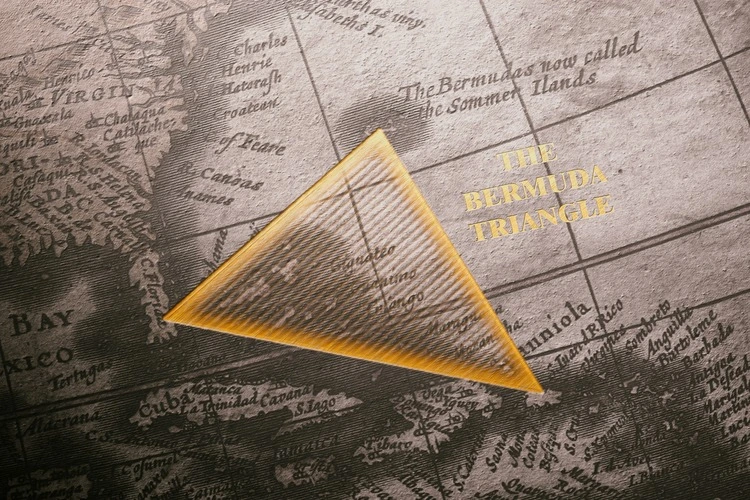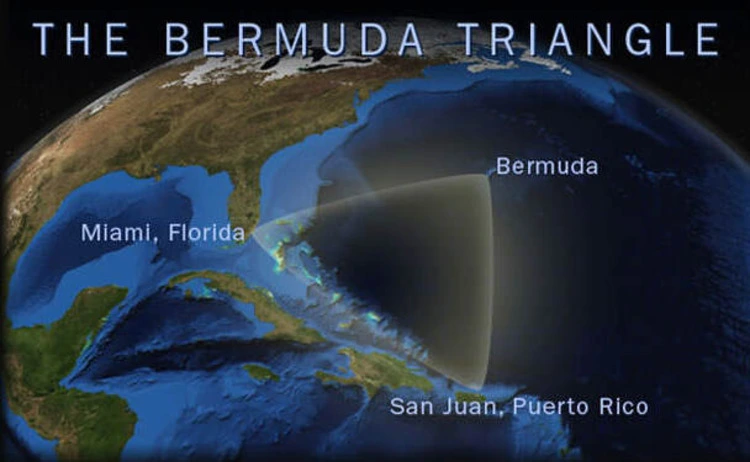
From strong Gulf Stream currents to a high frequency of hurricanes and cyclones, explore the truth behind Bermuda Triangle legends
By
Home to endless speculation amid its notoriety for mysterious disappearances – with estimates that about 50 ships and 20 airplanes have disappeared within its boundaries – theories about the Bermuda Triangle are vast and varied. Ranging from disruptions in geomagnetic lines of flux to methane gas erupting from ocean sediments, to extraterrestrial forces and otherworldly activity, there have been swarms of discussions originating from these waters.
Enjoying this article? Check out our related reads:
But the Bermuda Triangle may not be as strange as popular culture may lead you to believe. Read on to find out more and uncover the truth about the stretch of water…
What is the Bermuda Triangle?
The Bermuda Triangle is a region in the North Atlantic Ocean, whose boundaries are not universally agreed upon. As a rough guide, it is bounded by the southeastern coast of the US, Bermuda, and the islands of the Greater Antilles (Cuba, Hispaniola, Jamaica and Puerto Rico), forming the familiar triangle shape where its name originates.

The first reports of unexplained occurrences in the area didn’t occur until the mid-19th century, but despite popular belief, the Bermuda Triangle is not a hotspot for strange activity. The disappearances which occur in the Bermuda Triangle are not greater in frequency than other comparable regions in the Atlantic Ocean.
So, then, why have any ships and planes gone missing in its vicinity?
An environmental storm
According to NOAA, one major reason that may explain the disappearance of the Bermuda Triangle is the Gulf Stream, a vital ocean current that is responsible for bringing heat from the tropics to higher latitudes. The current is part of the Atlantic Meridional Overturning Circulation – or AMOC for short – which comprises many other currents that work together to form a ‘global conveyor belt’ that shifts sediment, organisms and heat across various parts of the world.
Although the Gulf Stream is important for the planet, in the context of ships and planes travelling through the Bermuda Triangle, it can also wreak havoc by causing rapid and sometimes violent changes in weather. The presence of the AMOC also may explain why ships and planes that have disappeared in the Bermuda Triangle are difficult to find, dispersing any wreckage quickly away from the site of the crash.
Extreme weather patterns in the Bermuda Triangle are not an uncommon occurrence, with reported incidents of ‘white squalls’ – intense storms that arrive with no warning. Waterspouts can also crop up in these unpredictable waters, a column of air and water mist often dubbed as a ‘sea tornado’. Both the rapidly changing direction and speed of winds from waterspouts can cause damage to boats and even capsize them.

A high frequency of tropical storms and hurricanes also happen within the Bermuda Triangle boundaries, potentially ending in fatalities for those caught amid them. Historically, ships which went missing also relied on far less accurate forecasting before setting sail, and would be more vulnerable to the effects of extreme weather changes.
Another factor leading to the disappearance of ships within the region is the large number of islands in the Caribbean Sea, the presence of which can create areas of shallow water not conducive to smooth navigation.
Apart from the behaviour of the waters within the Bermuda Triangle, though, there is also some evidence suggesting the region itself can cause misleading, and in some cases, dangerous errors within compasses so that they point towards ‘true’ north instead of ‘magnetic’ north. This may seem like a subtle difference but is vast – while true north is a fixed point, magnetic north changes depending on location. Such a discrepancy could cause navigation to be off by a few degrees or more, landing ships in locations far from their intended location with disastrous consequences.
Ultimately, the supernatural legends surrounding the Bermuda Triangle are categorically denied by the US Navy and US Coast Guard, and instead a plethora of scientific knowledge points to both environmental factors, and human error, as the culprits behind the disappearance in these waters.




